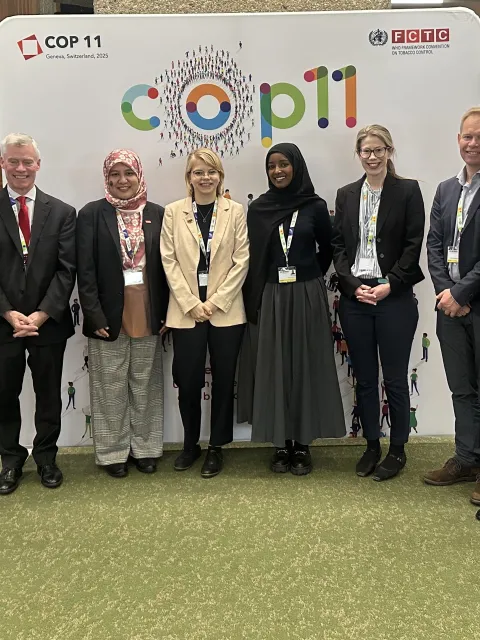The misleading and industry-friendly narrative of Sweden's 'smoke-free' status
Recent media accounts crediting Sweden’s ‘smoke-free’ status to snus and other nicotine products follow a tobacco industry narrative that misrepresents smoking trends and the public health efforts that have reduced smoking.

Recent reports in mainstream media have celebrated Sweden's ‘smoke-free’ status, with the daily smoking rate among Swedish-born adults reported at 4.5%.
These accounts present smokeless tobacco products or alternative nicotine products such as snus, as having played a central role in reducing smoking rates.
There is no evidence, however, that smokeless products reduce smoking rates. In fact, some studies suggest it can increase the risk of starting smoking, often leading to dual use.
The tobacco industry is aggressively promoting this narrative as part of its agenda, not only within Sweden and across Europe but also other countries around the world, to market snus and other smokeless nicotine products as public health tools, and capture a new generation of consumers.
Indeed, Sweden, like many other countries, is experiencing a concerning rise in alternative nicotine product use. E-cigarette use doubled in the general population from 2% in 2022 to 4% in 2024, with an increase from 6% to 10% among 16-29-year-olds. Snus use – encompassing both nicotine and tobacco snus – has also grown, rising from 17% to 20% in the general population and from 22% to 27% among younger users.
These trends highlight the need to address the misleading narrative being promoted by the tobacco industry, which undermines proven regulatory measures, such as comprehensive bans on tobacco advertising and promotion, graphic health warnings covering 65% of cigarette packaging, significant taxation on tobacco products, age restrictions, and smoke-free environments.
These policies, not alternative nicotine products, remain the most effective tools for reducing smoking rates and protecting public health, but tobacco companies oppose these measures wherever possible.
“Smoking is one of the leading preventable causes of cancer, so it is great to see Sweden boast such low smoking rates, which is a testament to the effectiveness of proven public health strategies. It is alarming, however, that the tobacco industry is effectively misrepresenting this success to further its own commercial interests in selling smokeless products such as snus. It is equally disturbing that this narrative and the industry’s manipulation of science is being picked up by the media, with danger of influencing public opinion and health decisions."
– Ulrika Årehed Kågström, President of UICC and Secretary-General of the Swedish Cancer Society
Statistics on smoking and nicotine product use in Sweden for 2022 to 2024 come from The National Public Health Survey, conducted by the Public Health Agency of Sweden, made available through Public Health Data and Public Health Studio.
Last update
Tuesday 03 December 2024
